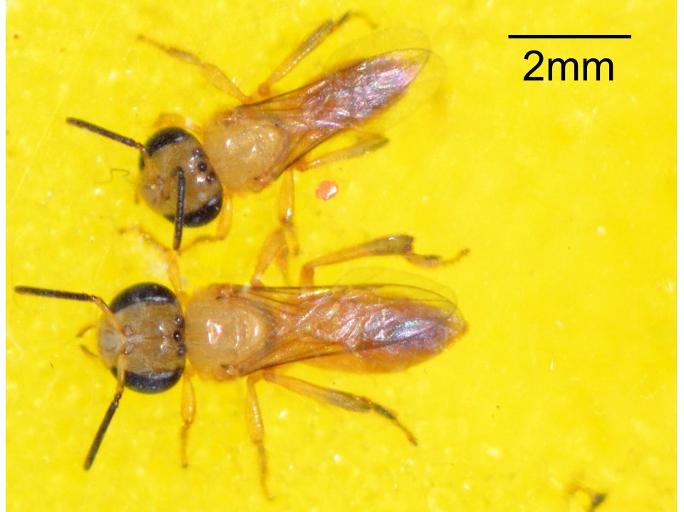Communication and social learning
In many social insect species, workers communicate the location of profitable food sources or nest-sites to their nestmates. Honeybee foragers, for example, use the famous waggle dance to advertise profitable resources (photo). Foragers of many ant and some bee species lay pheromone trails. We try to understand the costs and benefits of different communication methods.
Empirical and theoretical research suggests that under some circumstances searching independently (scouting) or relying on past experiences (personal information) might be a more successful strategy. We study the ecological circumstances that favour different information-use strategies and try to understand how individual decisions lead to collective behavioural patterns. Furthermore, we try to find out which genes predict information-use strategies.
Representative papers
- Glaser, S.M. & Grüter, C. 2023. Social and individual learners use different pathways to success in an ant mini-society. Animal Behaviour, 198: 1-9. pdf
- I’Anson Price R, Dulex N, Vial N, Vincent C & Grüter C (2019) Honeybees forage more successfully without the "dance language" in challenging environments. Science Advances, 5: eaat0450. pdf
- Grüter C and Leadbeater E (2014) Insights from insects about adaptive social information use. Trends Ecol. Evol. 29:177-184. pdf
Colony organisation and division of labour
Division of labour is important for the ecological success of social insects. In most species, workers perform different tasks as they age (temporal caste systems). For example, foraging is often performed by older workers. In some species, however, workers are morphologically specialised for particular tasks (physical sub-castes). While division of labour has been extensively studied in honey bees and ants, little is known about colony organisation and division of labour in the largest group of highly eusocial bees, the stingless bees (Meliponini). Stingless bees show diverse life-histories, including both temporal and physical caste systems (photo shows a soldier and a minor worker of the species Tetragonisca angustula). We try to understand the costs and benefits associated with different types division of labour.

Representative papers
- Grüter C, Segers F, Menezes C, von Zuben L, Vollet-Neto A, Falcon T, Bitondi M, Nascimento FS & Almeida E (2017) Repeated evolution of soldier sub-castes suggests parasitism drives social complexity in stingless bees. Nature Communications, 8: 4. pdf
- Segers FHID, von Zuben L and Grüter C (2016) Local differences in parasitism and competition shape defensive investment in a polymorphic eusocial bee. Ecology 97: 417-426. pdf
- Grüter C, Menezes C, Imperatriz-Fonseca V and Ratnieks FLW (2012) A morphologically specialised soldier caste improves colony defense in a Neotropical eusocial bee. PNAS, 109, 1182-1186. pdf